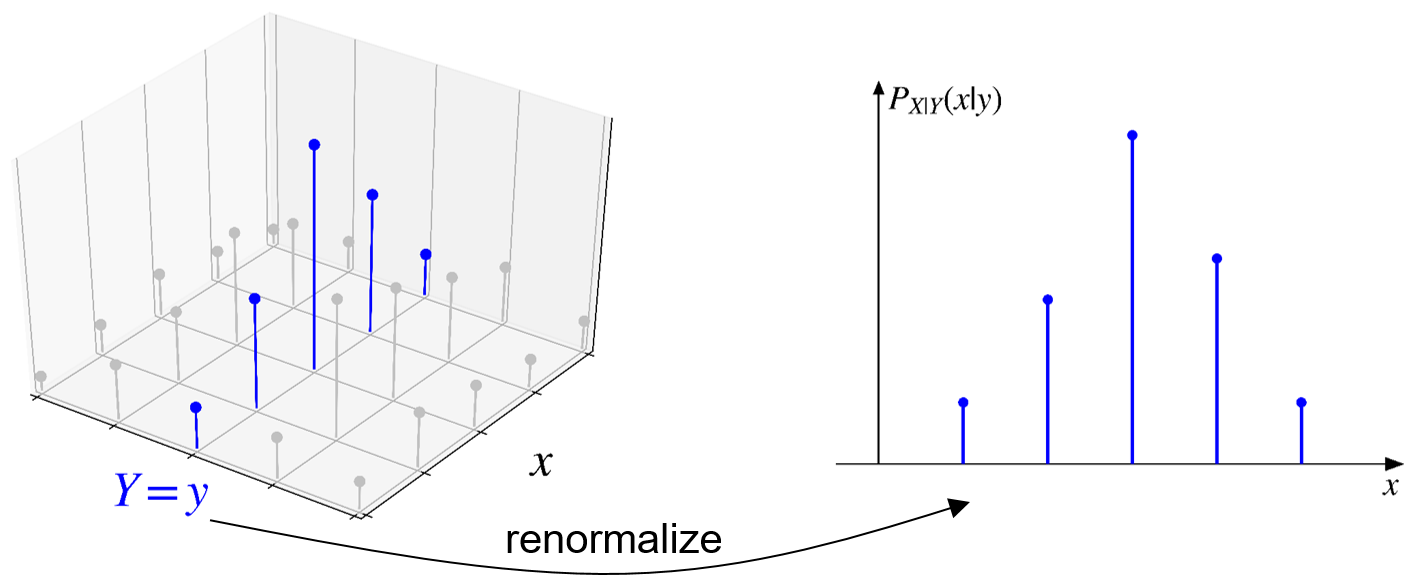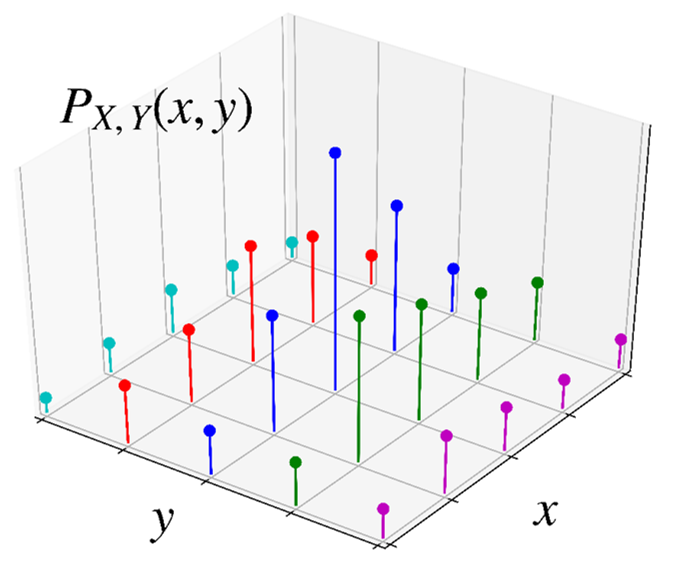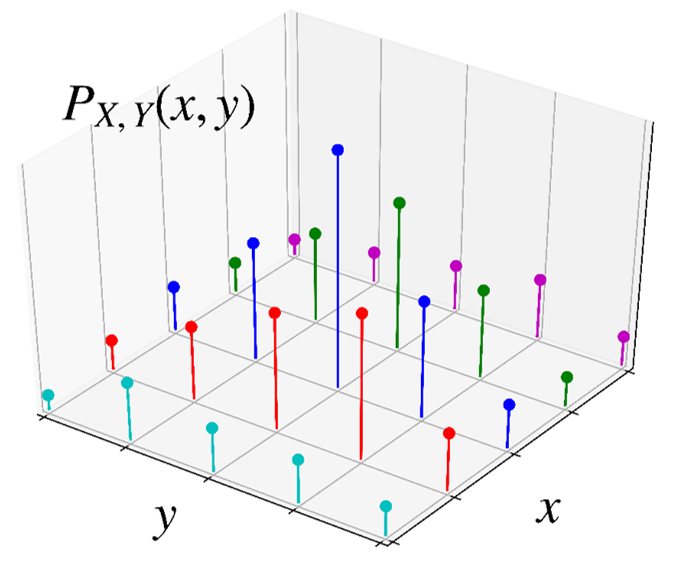5.2 Conditional PMF
Conditional PMF
The conditional PMF of \(X\) given \(Y=y\) is defined by
\[ \begin{aligned} p_{X \mid Y}(x \mid y)&=\text{P}(X=x \mid Y=y) \\ \\ &=\frac{\text{P}(X=x, Y=y)}{\text{P}(Y=y)} \\ \\ &=\frac{p_{X, Y}(x, y)}{p_Y(y)} \\ \end{aligned} \]
\[ p_{X \mid Y}(x \mid y)=\frac{p_{X, Y}(x, y)}{p_Y(y)} \]

\(p_{X \mid Y}(x \mid y)\) has the same shape as \(p_{X, Y}(x, y)\) at \(Y=y\) except that it is divided by \(p_Y(y)\) to enforce the normalization property.
\[ \begin{aligned} \sum_x p_{X \mid Y}(x \mid y)&=\sum_x \frac{p_{X,Y}(x,y)}{p_Y(y)} \\ \\ &=\frac{1}{p_Y(y)} \sum_x p_{X,Y}(x,y) \\ \\ &=\frac{1}{p_Y(y)} \; p_Y(y) \\ \\ &=1 \\ \end{aligned} \]
\(X\): whether they are a current smoker
\(Y\): whether they will develop lung cancer at some point
\(Y=0\) \(Y=1\) \(p_X(x)\) \(X=0\) \(72\%\) \(3\%\) \(75\%\) \(X=1\) \(20\%\) \(5\%\) \(25\%\) \(p_Y(y)\) \(92\%\) \(8\%\) \(100\%\) If an individual developed lung cancer, what is the probability that they are a current smoker?
\(X\): whether they are a current smoker
\(Y\): whether they will develop lung cancer at some point
\(Y=0\) \(Y=1\) \(p_X(x)\) \(X=0\) \(72\%\) \(3\%\) \(75\%\) \(X=1\) \(20\%\) \(5\%\) \(25\%\) \(p_Y(y)\) \(92\%\) \(8\%\) \(100\%\) If an individual is a current smoker, what is the probability that they will develop lung cancer?
Slice view of conditional PMF
\[ p_{X \mid Y}(x \mid y)=\frac{p_{X, Y}(x, y)}{p_Y(y)} \]

Slice view of conditional PMF
\[ p_{Y \mid X}(y \mid x)=\frac{p_{X, Y}(x, y)}{p_X(x)} \]

\[ \begin{aligned} p_{X \mid Y}(x \mid y)&=\frac{p_{X, Y}(x, y)}{p_Y(y)} \\ p_{X, Y}(x, y) &= p_Y(y) \cdot p_{X \mid Y}(x \mid y) \\ \end{aligned} \]
Similarly,
\[ \begin{aligned} p_{Y \mid X}(y \mid x)&=\frac{p_{X, Y}(x, y)}{p_X(x)} \\ p_{X, Y}(x, y) &= p_X(x) \cdot p_{Y \mid X}(y \mid x)\\ \end{aligned} \]
We often can use this formula to calculate the joint PMF.
\[ \begin{aligned} p_{X, Y}(x, y) &= p_X(x) \cdot p_{Y \mid X}(y \mid x) \\ \\ &= p_Y(y) \cdot p_{X \mid Y}(x \mid y) \\ \end{aligned} \]
Does this look like something we have learned before?
This is the counterpart of the multiplication rule.
\[ \begin{aligned} \text{P}(A \cap B) &= \text{P}(A) \cdot \text{P}(B \mid A) \\ \\ &= \text{P}(B) \cdot \text{P}(A \mid B) \\ \end{aligned} \]